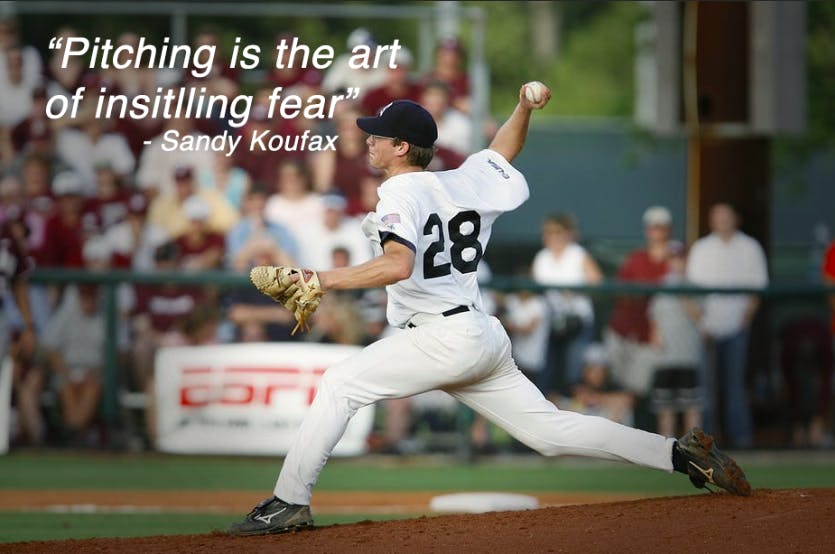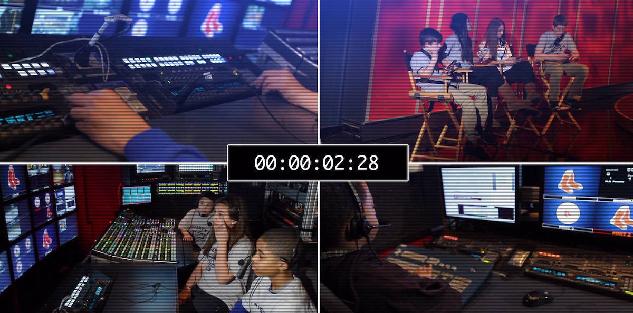Featured courses
- Understanding The Shift by Brandon Ogle
- Two Drills to Improve Outfield Movement and Communication by Grant Young
- The Ultimate Resource For Coaching Youth Baseball by Jackson Chlebowy
- Become a Master at Bunting by Brandon Ogle
- 5 Reasons Why There Is More To Good Base Running Than Just Speed by Brandon Ogle
- Three Injury-Prevention Tips For Your Offseason Pitching Program by Grant Young
- How to Teach Hitting to the Next Generation by Grant Young
- Developing Defensive-Minded Baseball Catchers by Grant Young
- 3 Baserunning Tips to Score More Runs in Baseball by Grant Young
- 5 Outfield Drills to Work on in Season by Alec Burris
- Keys For Scoring More With Runners on First and Third Base by Grant Young
- How to Develop Your Game to Become a Five-Tool Player by Brandon Ogle
- 3 Coaches Share the Keys to Running Baseball Practice the Right Way by Grant Young
- Four Drills to Sharpen a Baseball Hitter’s Vision at the Plate by Grant Young
- Four Quotes to Hit Better With Two-Strikes by Grant Young
- Four of Former MLB Pitcher Juan Nieves’ Movement-Based Pitching Drills by Grant Young
- Two Tips For Developing an Elite Baseball Bullpen by Grant Young
- Overcoming the Four Challenges of Indoor Baseball Practices Because of Weather by Grant Young
- Three Tips to Make Your Baseball Team Mentally Tougher by Grant Young
- Three Priceless Philosophies to Motivate Your Baseball Team by Grant Young
- Three Offseason Baseball Drills to Simulate Competition by Grant Young
- Three Baseball Offseason Strength and Conditioning Essentials by Grant Young
- Important Ways to Improve Your Baseball Team’s Baserunning by Grant Young
- Three Ways to Perfect Hitting Mechanics From an MLB Icon by Grant Young
- Catchers can influence pitchers...for bad or good by Drew Johnson
- Throwing Strikes and Playing Good Defense Equals Wins by Jose Ortiz
- Legendary Indiana Head Baseball Coach Bob Morgan’s Offensive Theory by Grant Young
- Tennessee Head Baseball Coach Tony Vitello on How to Practice Baserunning by Grant Young
- Three Great T-Ball Drills For Youth Baseball Players by Grant Young
- How to Manage a Baseball Pitching Staff by Grant Young
- Three Uncommon Tips to Become a Better Hitter by Grant Young
- How a Baseball Coach Can Develop Strike Throwers by Grant Young
- Drills to Develop Elite Baseball Outfielders by Grant Young
- Baseball Training Exercises to Strengthen Arm and Bat Speed by Grant Young
- How to Use Bunting to Score More Runs by Grant Young
- How To Build An Elite Baseball Infielder by Grant Young
- Three Drills to Improve Your Baseball Team's Infield Play by Grant Young
- Three Keys to Curating a Pitching Staff’s Success by Grant Young
- 3 Techniques to Develop a Baseball Player’s Hitting Approach by Grant Young
- How to Cultivate Confidence Within Your Pitchers by Grant Young
- 5 Every Day Drills To Help You Become A Better Catcher by tyler Linderman
- How to Throw A Curveball by Brandon Ogle
- How to Assemble a Lock-Down Bullpen by Brandon Ogle
- How to Throw a Sinker by Brandon Ogle
- How to be a Smart Baserunner by Brandon Ogle
- Improving a player's slugging average by Phillip Woolgar
- The 8 Fundamentals of Pitching by Drew Johnson
- How to Throw a Deceiving Changeup by Brandon Ogle
- Step Up Your Outfield Defense With These Three Drills by Jose Ortiz
- 8 Baseball Drills Every Player Should Practice by Drew Johnson
- How To Become An Elite Defensive Outfielder by Tyler Linderman
- 5 Tips For Crushing A Curveball by Johnny Grassi
- LEGENDS FOR YOUTH INCLUSION BASEBALL CLINIC by Phil
- Fourteen Ways To Turn A .300 Hitter Into A .210 Hitter by Jay P. Granat, Ph.D.
- How To Become The Ideal Leadoff Man by Brandon Ogle

Fourteen Ways To Turn A .300 Hitter Into A .210 Hitter
Here are a few tips that can help pitchers throw more strikes in those big games:
Utilize records, data and video from previous games to better understand the hitters you will be up against and learn how best to pitch to certain batters. For instance, if the hitter likes to extend on the ball, it makes sense to pitch to him inside. Similarly, if a hitter has trouble with a fastball, the pitcher may want to rely on this basic pitch.
Diversify your pitches. Pitchers can benefit from mastering four or five pitches. While this is not a physically easy task, having a variety of pitches can keep batters guessing and consequently off balance.
Throw more strikes. Throwing strikes is very important. In addition, focusing on throwing strikes can help to remove mental clutter from the pitcher’s mind and can help to simplify the task at hand for many pitchers.
Stay ahead of the hitter. At the major league level, staying ahead of the hitter can actually turn at .300 hitter into a .210 hitter as found by the sports statistical researchers at Carlton Chin. This ninety-point swing can be a huge advantage for the hurler. Pitchers need to have an appreciation of this simple mathematical fact.
Build relationships. Pitchers need to have a good working relationship with their pitching coach, their head coach and their catcher.
Develop a positive self-talk. A Pitcher needs to know what kind of self-talk allows them to “enter the zone” on the mound. It is all about how you communicate and drive yourself when it comes to getting positive outcomes.
Clear your mind. Some pitchers benefit from knowing how to empty their minds of all distractions before each and every pitch. This empty mind helps them to allow their athleticism and years of training to take over when they are on the pitching mound.
Visualize your target. Some pitchers think in terms of hitting the catcher’s mitt. Others try to hit portions of the plate. Pitchers need to choose a target that gives them the right amount of focus, without creating too much anxiety for them. The right target can very from pitcher to pitcher.
Disrupt the hitter’s timing. While location of pitches is very important, pitchers need to remember that good pitching is also about disrupting the hitter’s timing. Varying speeds can be a very useful skill for baseball hurlers.
Limit self-inflicted pressure. Some pitchers put too much pressure on themselves by forgetting that they have teammates on the field that can help them win games. A ground out or fly out is as good as strikeout much of the time in baseball.
Focus on one thing. Some baseball hurlers do well by focusing on a simple part of their mechanics. For example, a pitcher might focus on the follow through or their leg maneuvers. Another pitcher might repeat a short phrase to himself like “easy does it.” Find what works for you to simplify your pitch.
Develop a pre-pitch routine. Having a consistent pre-pitch routing helps many pitchers to perform well.
Find your pitching habit. Knowing the pace that you like to pitch at is also important. Some pitchers like to work rapidly. Others need more time between each pitch. Pitchers who are struggling may want to adjust their pace of pitching accordingly. Experiment with less time or more time and see what works best.
Focus your mind with mental training exercises. Pitchers can benefit from mental toughness training to show them how to be relaxed, confident, focused and resilient when the pressure is on. Hypnosis, visualization and meditation can help pitchers to maintain the right mindset in the dugout, in the bullpen and on the mound.
Jay P. Granat, Ph.D. is a psychotherapist, author and founder of www.StayInTheZone.com
Learn more about how you can start pitch in the zone in Dr. Granat’s full course on CoachTube:How To Throw More Strikes With Sport Psychology & Self-Hypnosis



